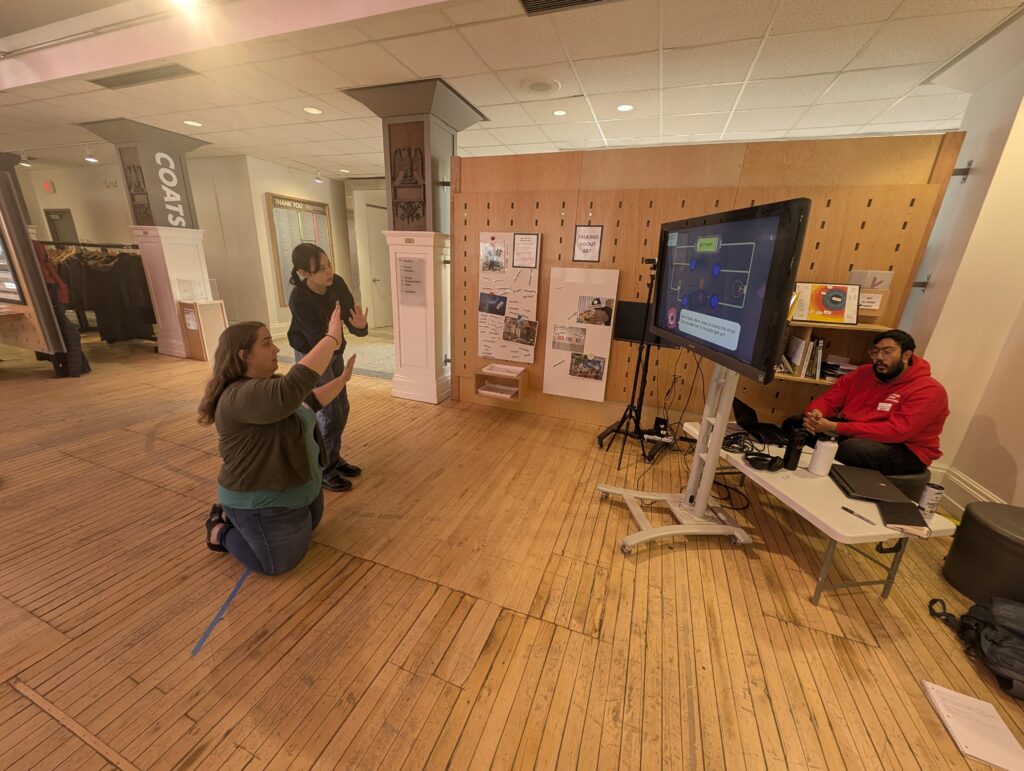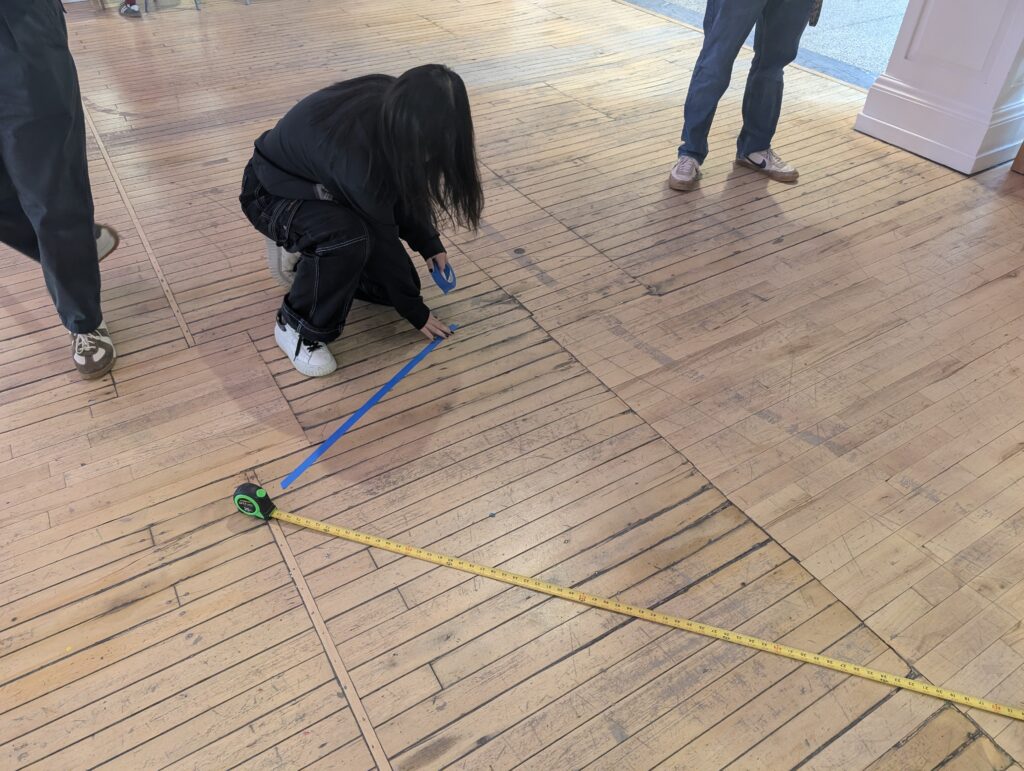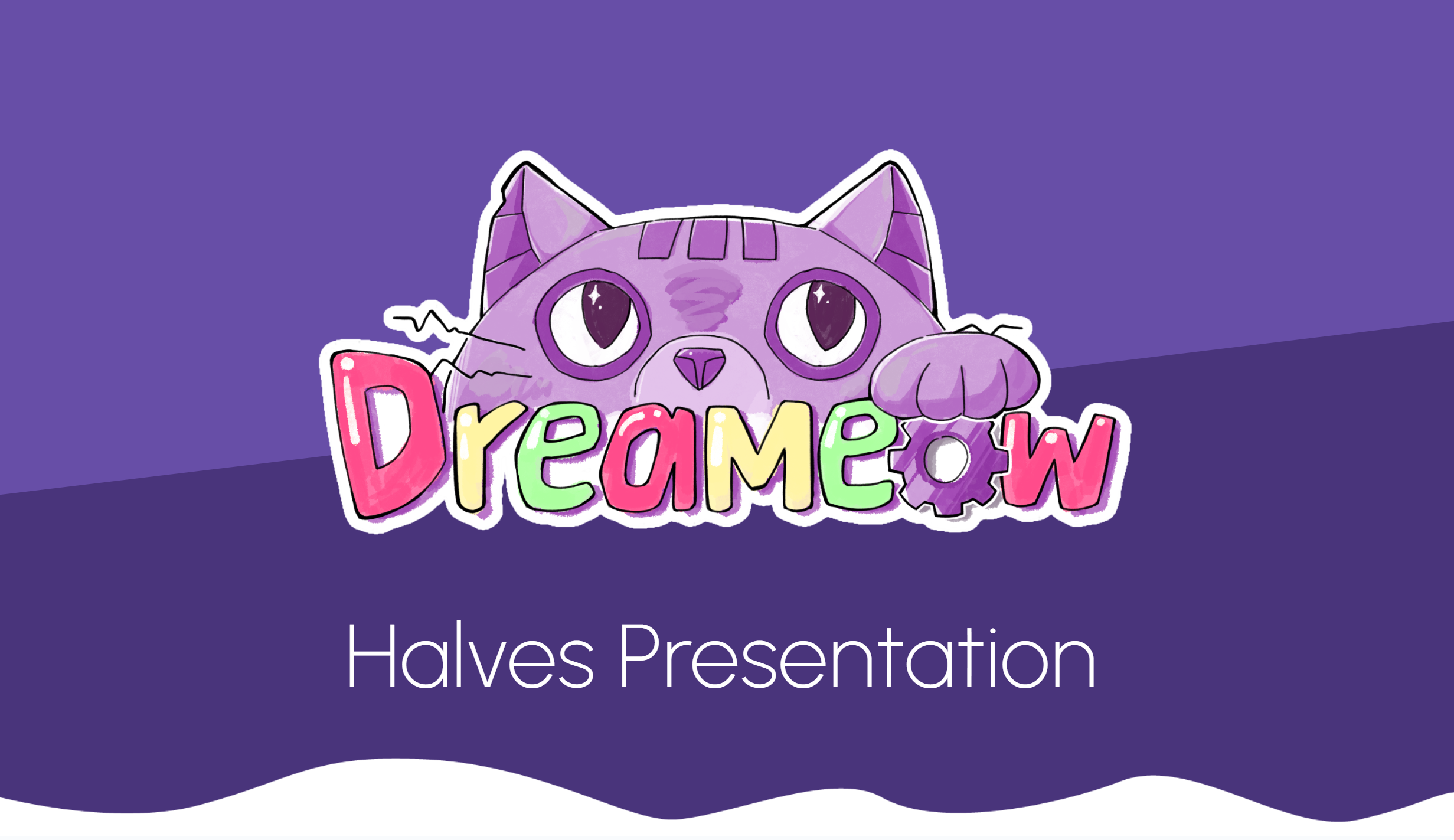Halves
We started off the week with our Halves presentation! After meeting over the weekend to rehearse, we felt pretty confident going into Halves, and overall we think it went pretty well. Now, to prepare for our playtest at the Children’s Museum.
Children’s Museum Playtest
Although we dealt with some technical difficulties in the beginning, we were able to get a lot of good feedback from our playtest! This was a really important milestone as it was the first time we have been able to test with a group that is closer to our target audience. The kids at the museum today were mainly kindergarteners, so this was a good opportunity to see how much facilitation is needed for younger children (which is quite a bit in its current state). We learned some very valuable insights:
- The UI will need to be rearranged, as small children cannot easily reach the top of the screen
- The kids really enjoyed turning the circuit on
- Kids will try to work together to connect the circuit
- Young kids are not able to figure out how the circuit works on their own and needed help to understand where to put their hands
- A lot of kids first instinct is to rapidly wave their hands around
- The nodes need to be easier to grab and fill up faster
We’re so grateful to Brianne Tupper and the other employees at the Children’s Museum! Hopefully we will be able to return for more playtests in the future.


Iterating On Feedback
We received mostly positive feedback from Halves, although the faculty did raise some concerns about the team’s direction and the amount of progress we’ve made so far. They like that we are planning to do a lot of playtesting, but feel that we should have at least one completed experience by this point. There are also some concerns about the experience feeling too much like a game and meeting our accessibility design goal.
Won’s minigame has the most complex interactions, which is why we started with that first. Bil and Mage should take less time to complete, but we will definitely make sure we focus on getting something complete so that we can have them ready for our next playtest. We will be meeting with Ian after Spring Break to update him on our progress.
Bil and Mage Prototypes
Rushil and Malaya got the basic functionality for Bil and Mage’s experiences working. While initially we had planned to use the Bottler colors (pink, green and yellow) for Mage’s color mixing experience, we realized that this doesn’t create a very satisfying experience as kids will be very limited in the colors they can create. Michelle created some placeholder models for the Rocket building experience.
Hardware
Melanie and Steve met to discuss the things she’ll need to keep in mind as she builds the rocket model in Maya. Trying to create a model that can house the arduino parts like we need to without having anyone who is comfortable with CAD software will present a challenge, so we will begin doing some test prints over the next few weeks. I have started testing out running some of the basic arduino commands such as turning an LED on and off from Unity using serial communication. Currently it works when the arduino is plugged into the same PC, but not with Bluetooth, so I will be troubleshooting that next week.
Priorities For Next Week (Or After Spring Break):
- Programming:
- Won:
- Start working on additional levels
- Implement circuit logic
- Finish Bil and Mage prototypes
- Rocket:
- Complete functionality for sending commands to Arduino from Unity
- Won:
- Art:
- Work on final UI design
- Start designing the rocket model and doing test prints
- Production
- Set up additional playtests at Children’s Museum and MuseumLab.
- Coordinate with Ian about setup for the WonderLab playtest

